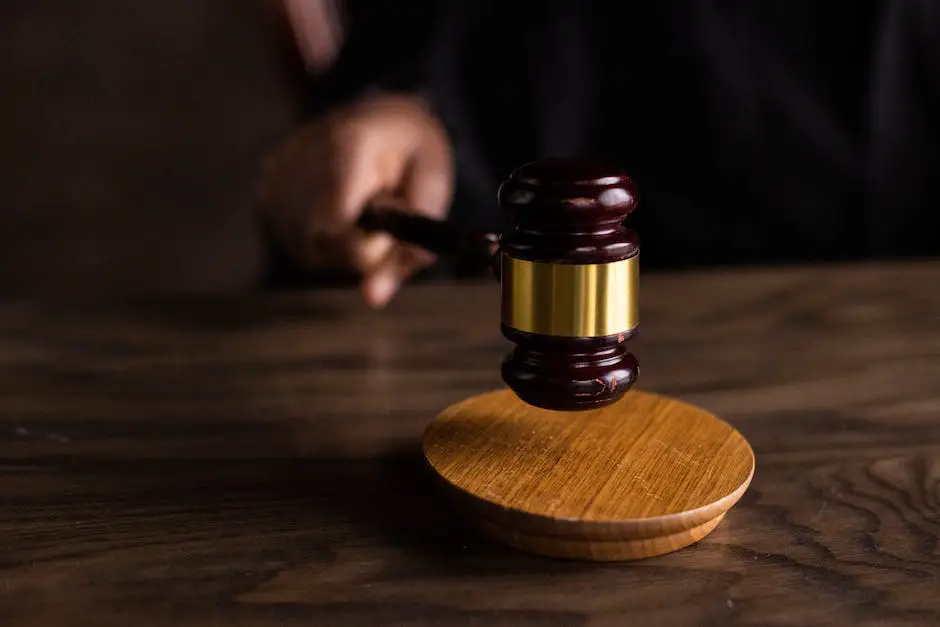The complexity of the law can often leave individuals feeling perplexed, especially when it concerns areas directly impacting personal safety, health, and well-being such as personal injury law. This integral branch of legal practice addresses instances where people are physically or psychologically harmed due to the negligence of others.
It encompasses a wide spectrum of cases from accidents to medical malpractice and product liability. This paper aims to unravel personal injury law, key elements of a personal injury case, and the steps involved in a personal injury lawsuit to give readers a clearer understanding of their rights and obligations.
Understanding Personal Injury Law
Definition: What is Personal Injury Law?
Personal injury law, otherwise known as tort law, revolves around the premise that if an individual suffers harm due to another individual’s wrongful conduct, they are entitled to compensation for their loss. In legal terms, “personal injury” refers to physical, emotional, or mental harm inflicted upon a person. This can encompass a variety of incidents including car accidents, slip and fall accidents, medical malpractice, and even damage caused by defective products.
Scope of Personal Injury Law and Negligence
Central to personal injury law is the concept of negligence, which arises when an individual fails to exercise reasonable care, resulting in harm to another person. For instance, a driver who is texting while behind the wheel and causes an accident can be held liable for negligence. Similarly, a manufacturer who creates a defective product that injures consumers could also be considered negligent. In a negligence case, the victim, known as the plaintiff, must prove that the defendant owed them a duty of care, the defendant breached this duty, this breach caused the plaintiff’s injury, and the plaintiff suffered harm as a result.
Principles Governing Personal Injury Law
There are several key legal principles that underpin personal injury law. These include the principle of “duty of care,” which refers to a person’s responsibility to avoid injuring someone else or putting them in danger. There’s also the doctrine of “comparative negligence,” where even if the victim was partly responsible for their harm, they can still receive compensation, though it may be reduced in line with their share of blame.
Role of the Personal Injury Lawyer
Lawyers specializing in personal injury law are responsible for helping victims obtain compensation for their injuries. This compensation, known as damages, is intended to restore the victim to the position they would have been in had the harm not occurred. The duties of a personal injury lawyer can include gathering evidence to be used in proving negligence, negotiation with the defendant’s insurance company, and litigation, if necessary.
Understanding the Legal Process of Personal Injury Cases
The journey of a personal injury case commonly starts with the victim, guided by their attorney, lodging a lawsuit against the suspect deemed responsible for their injury. This action kicks off through filing a case, detailing the unlawful activities conducted by the said defendant. The defendant then receives an opportunity to submit their response.
Provided the case doesn’t undergo an out-of-court settlement, it advances to trial. During this phase, both parties present their evidence and put forth their arguments in front of either a judge or a jury. Following the official verdict, an appeal can be lodged by any party dissatisfied with the outcome to a higher court. When the plaintiff is successful, the court instructs the defendant to compensate them with a particular sum of money, serving as a remedy for the causation of their damage.

Key Elements of a Personal Injury Case
Determining Liability in Personal Injury Lawsuits
In personal injury cases, the key element is to determine liability, i.e., to assign responsibility for the injury occurred. Usually, this transpires when one party inflicts harm on another due to negligence or deliberate misconduct. This offending party, often referred to as the defendant, could represent an individual, a business, or even a government entity. It’s incumbent on the plaintiff in the majority of personal injury matters to illustrate that the defendant had a defined duty of care, failed in fulfilling this duty, and such a failure directly resulted in the injury.
The Role of Negligence
Negligence plays a pivotal role in personal injury law. It occurs when someone acts carelessly, leading to the injury of another party. For instance, a driver who speeds or ignores traffic signals, thus causing an accident, is negligent. Similarly, a company that fails to put the necessary safety measures in place might be considered negligent. Negligence doesn’t always imply that the party causing harm intended to do so; in most cases, it simply means they behaved in a way that a reasonably prudent person wouldn’t.
Understanding ‘Duty of Care’
Duty of care is a defining feature in negligence cases. Essentially, it refers to a legal obligation a person or entity has to ensure the safety or well-being of others. For example, drivers are obligated to follow traffic laws to keep pedestrians and other drivers safe. Similarly, a property owner has a ‘duty of care’ to maintain safe premises for visitors. Breach of ‘duty of care’ occurs when an individual or institution neglects this responsibility, resulting in harm or damage to another.
The Importance of Proving Damages
Not all accidents or incidents of harm necessitate a personal injury case. To justify a personal injury lawsuit, you must prove that you suffered significant damages as a result of the incident. Damages refer to the tangible and intangible losses a victim suffers, including medical expenses, lost wages, and the pain and suffering that stem from the injury. Hard evidence such as medical reports, receipts, and employment records can be used to demonstrate the extent of the damages.
Understanding Damages: Compensatory and Punitive
The goal of a personal injury damage award is, typically, to compensate the injured party for their losses and make them whole again. Compensatory damages cover very concrete costs like medical expenses, lost wages, and property damage. However, they can also cover intangible aspects like emotional distress, loss of companionship, and pain and suffering.
On the other hand, punitive damages aren’t meant to compensate the injury victim but to punish the wrongdoer for their negligent or careless act. They’re also designed to serve as a deterrent for others from committing similar acts. Punitive damages are awarded in addition to compensatory damages and are typically reserved for cases where the defendant’s conduct was particularly egregious or harmful.
Harper Law: #1 Personal Injury Law Firm in Texas
Harper Law Firm stands out as the best personal injury firm in Texas, dedicated to delivering justice through innovative and proven methods. Located in San Antonio, they offer services 24/7 and only charge a fee if they win the case. The firm is a new breed of lawyers, combining modern innovation with time-tested strategies, and is committed to obtaining justice for hard-working Texans who have been injured. Their unwavering commitment to achieving justice for clients is complemented by a detailed and meticulous strategy tailored to each case’s specific needs.
Founder Taylor W. Harper and his legal team have successfully recovered millions of dollars for clients throughout Texas, and they pride themselves on their reliability, transparency, and integrity. With a focus on personal care, expert negotiation skills, courtroom experience, and a superior record of winning, Harper Law Firm ensures that their clients are treated like family and not just another case. Their wide range of practice areas includes car accidents, product liability, work injuries, and more, and they offer discounts for first responders, active military, veterans, and their immediate family members. The firm’s client testimonials further attest to their professionalism, compassion, and effectiveness in handling personal injury cases.
Understanding Statutes of Limitations in Personal Injury Cases
One of the fundamental principles in personal injury cases is the statute of limitations. This refers to the specific legal time frame within which a personal injury lawsuit must be filed. The duration of this time frame varies greatly, depending on the case type and the laws within your state. Filing your case outside the mandated statute of limitations might lead to forfeiture of the legal right to seek compensation for the injuries sustained. Thus, it’s critical to familiarize yourself with the particular time limit that applies to your personal injury case to safeguard your rights.

Steps in a Personal Injury Lawsuit
The Role of a Personal Injury Lawyer in Your Case
Once you’ve familiarized yourself with the relevant statute of limitations, the next step to consider is engaging the services of a personal injury lawyer. An attorney in this field can provide critical legal advice, strategically build your case, and act as your shield against potential legal pitfalls. Your lawyer is instrumental in determining the gravity of your injury, calculating potential compensation, and crafting a compelling case in readiness for a lawsuit.
Investigation and Filing a Lawsuit
Before filing a lawsuit, the personal injury lawyer performs an in-depth investigation into the case. This may include gathering evidence, talking to witnesses, evaluating medical reports, and analyzing the extent of damage and its impact on the victim’s life. After all evidence is amassed and studied, the lawyer files the complaint, which is the first official document in the lawsuit, outlining the grounds for the claim and the desired compensation.
Discovery Process
The discovery process is a key phase in a personal injury lawsuit. During discovery, both sides of the lawsuit have the opportunity to share and examine the evidence. The process allows the other party to assess and counter the evidence presented. The methods of discovery may include interrogatories – written questions which must be answered under oath, depositions – formal, in-person interviews conducted under oath, and document production.
Negotiations and Settlement Agreement
Negotiations are a valuable part of any personal injury lawsuit. Both parties engage in discussions to try and resolve the case without going to court. This is typically a back-and-forth exchange involving offers and counteroffers. If negotiations are successful, a settlement agreement is reached which outlines the terms and compensation amount. It’s important to note that the vast majority of personal injury cases are settled in this stage.
Trial
In the event that negotiations fail to result in a settlement, the case will proceed to trial. At trial, both parties will present their cases before a judge or a jury. The presentation includes opening and closing arguments, witness testimonies, evidence presentations, and cross-examinations. At the end of the trial, the judge or jury will then make a verdict, deciding in favor of the plaintiff or defendant.
After the Verdict and the Appeal Process
Following the verdict, the losing party has the option to appeal the decision. Appeals can be filed on a variety of grounds, such as legal errors made during the trial. The appeal is a review process conducted by a higher court, which can confirm, reverse, or modify the initial decision. However, it’s important to understand that not all cases are eligible for an appeal, which is why guidance from a legal professional is essential.
Overall
A personal injury lawsuit involves several stages – each crucial in their own way, leading to the resolution of the case. It’s always recommended to seek professional legal counsel from the outset to ensure a thorough, well-navigated legal journey.

The journey through a personal injury claim can often be a daunting experience. However, equipped with basic knowledge of personal injury law, one can better navigate this journey. Understanding what personal injury law involves, the components of a personal injury case, and the steps to follow in a personal injury lawsuit is invaluable. This comprehension helps you protect your rights, seek appropriate legal assistance, and handle the inherent complexities of such cases with greater confidence. The hope is that this understanding will empower you to take appropriate action in the unfortunate event that you or your loved ones ever experience such circumstances.



